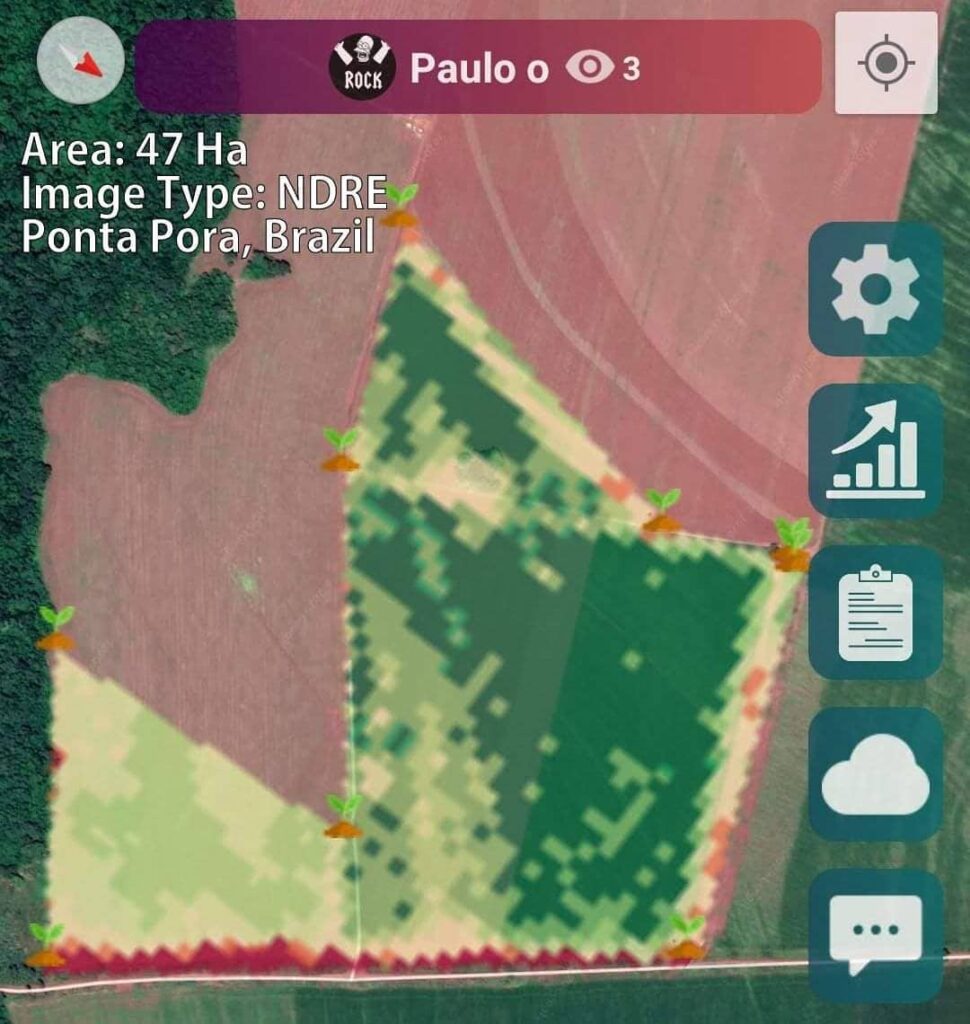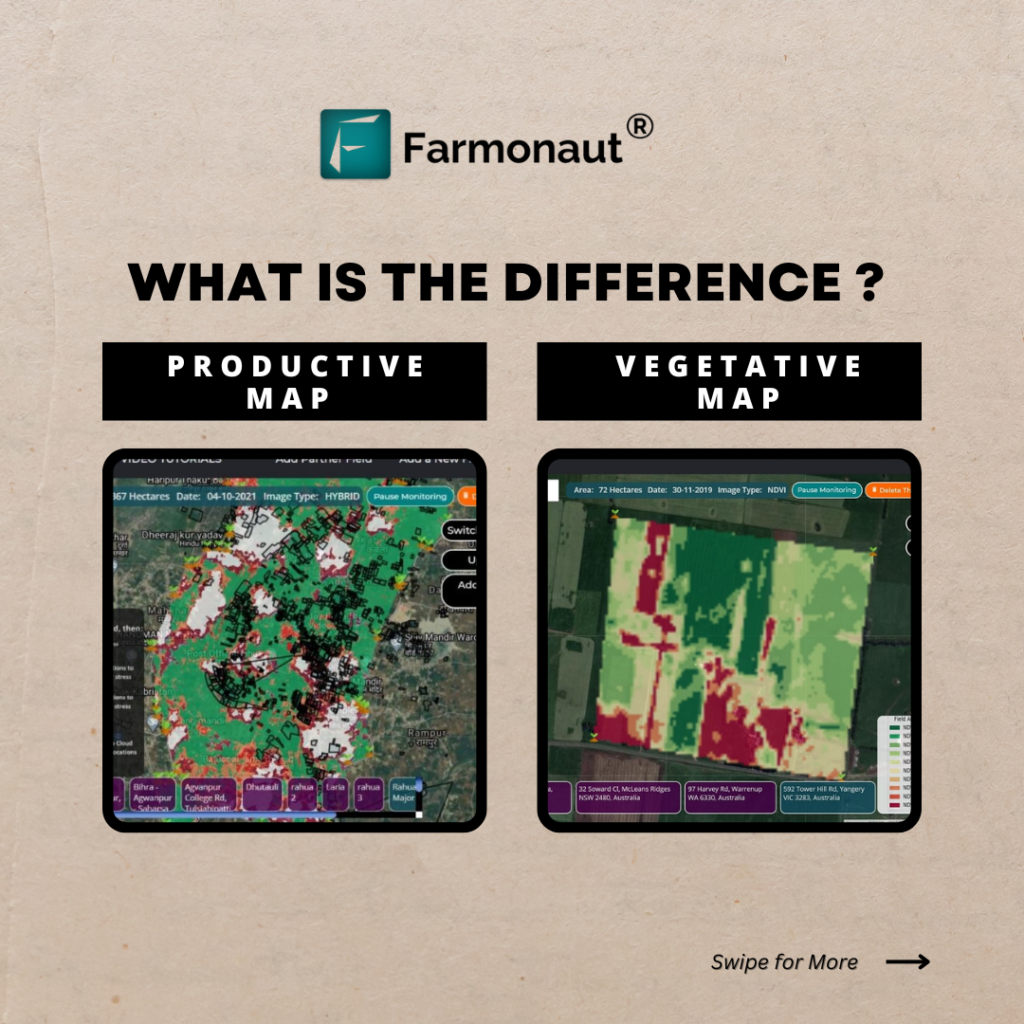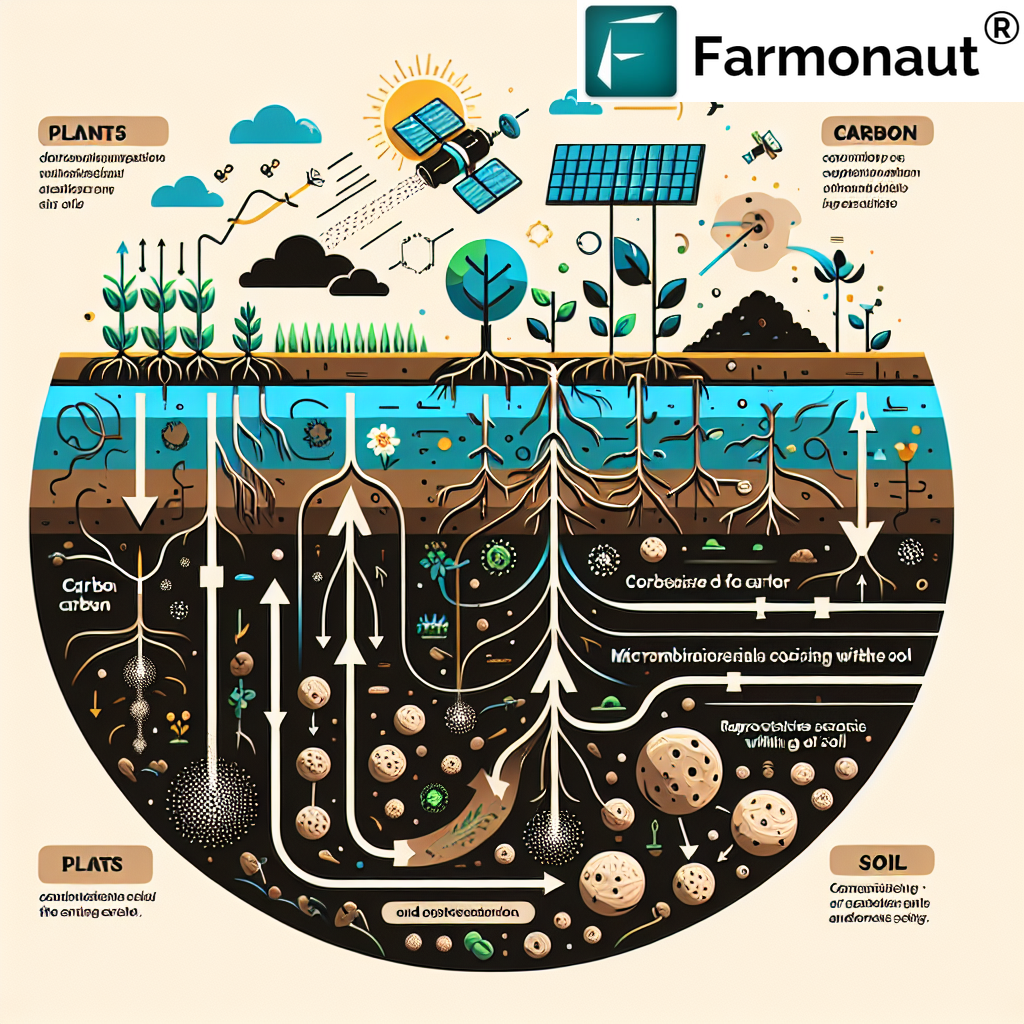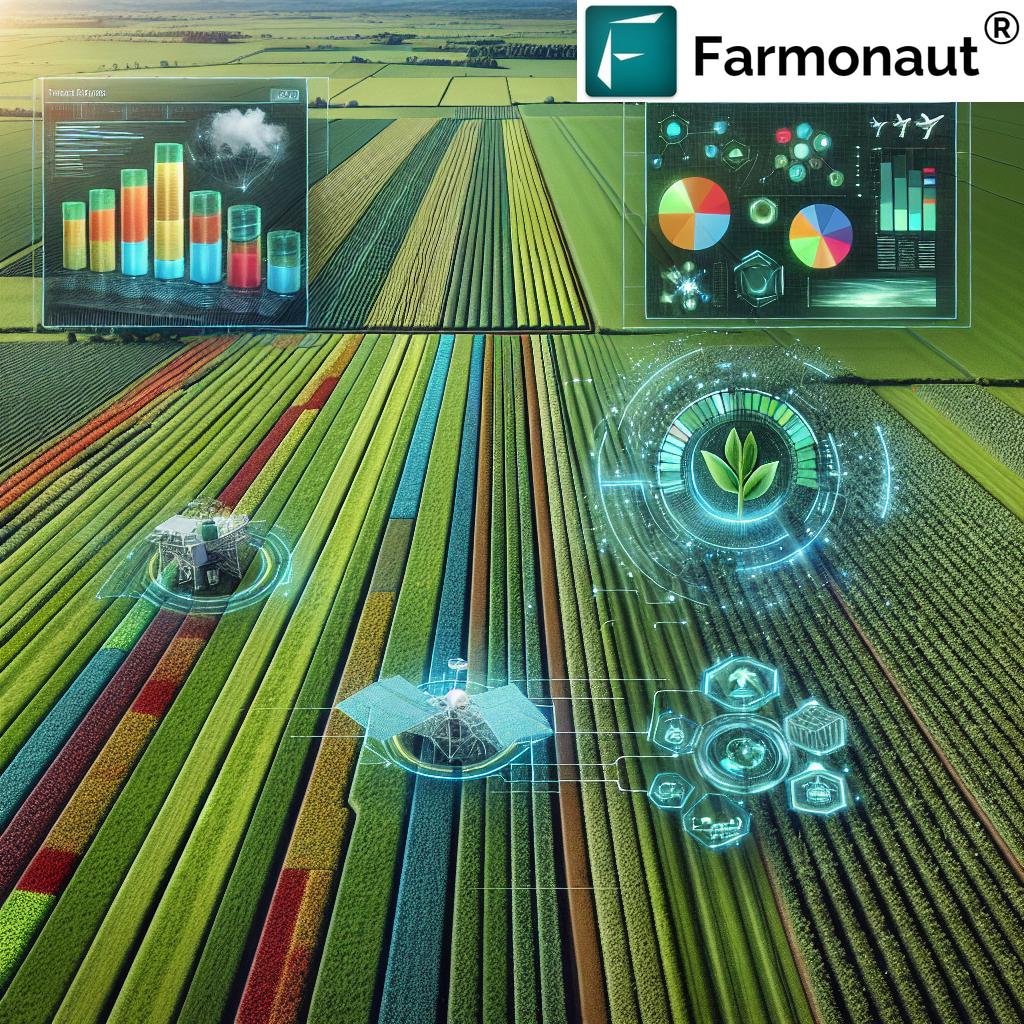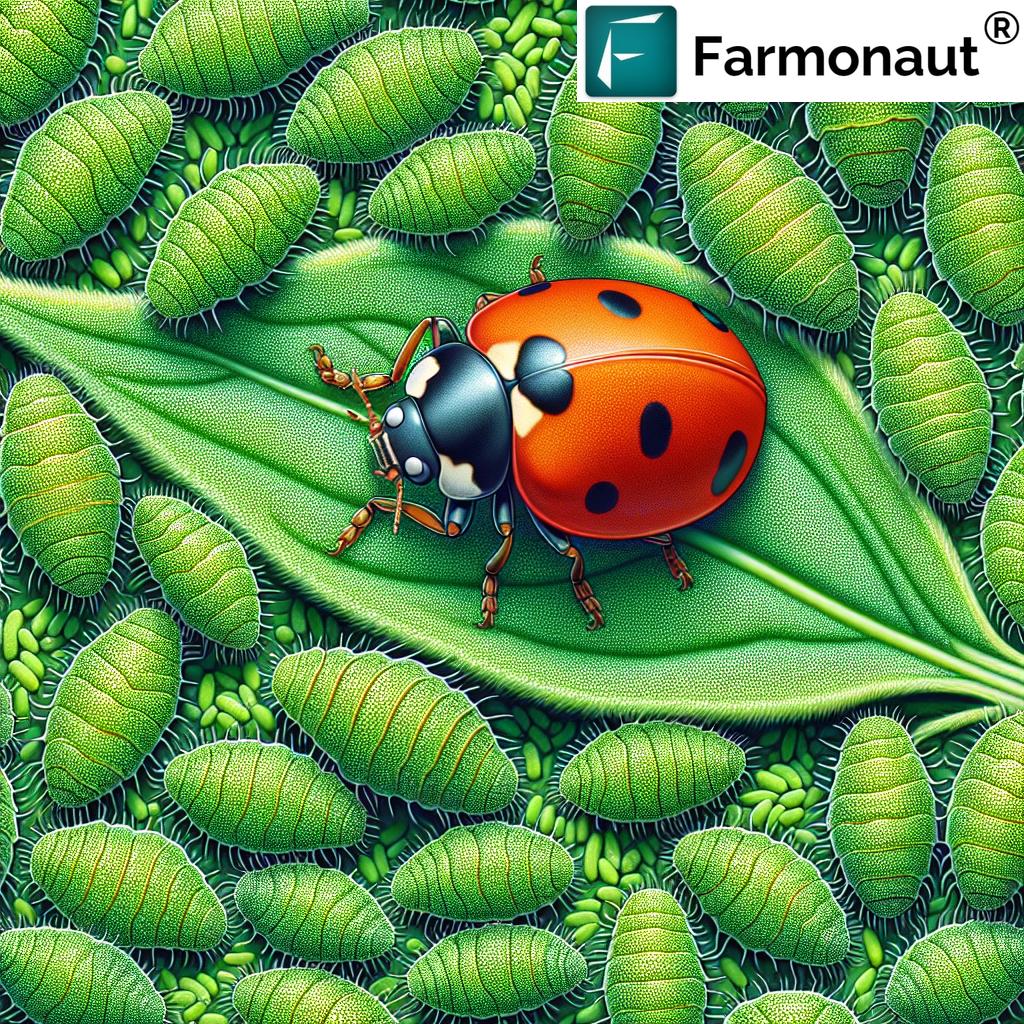Identifying Herbicide Injury: Symptoms and Control for Crop Protection in the Field

In the world of modern agriculture, herbicides play a crucial role in crop management and weed control. However, the improper use of these chemicals can sometimes lead to unintended consequences, causing damage to the very plants we aim to protect. As experts in agricultural technology and remote sensing, we at Farmonaut understand the importance of recognizing and addressing herbicide injury in crops. In this comprehensive guide, we’ll explore the symptoms, causes, and control measures for herbicide injury, as well as how advanced technologies can aid in early detection and management.
Understanding Herbicide Injury in Crops
Herbicide injury occurs when crop plants are exposed to herbicides in a way that causes damage. This can happen due to various factors, including:
- Incorrect application rates or timing
- Drift from nearby fields
- Residual herbicides in the soil
- Tank mix incompatibilities
- Environmental stress factors
Recognizing the symptoms of herbicide injury is crucial for farmers and agronomists to take timely action and minimize crop losses. Let’s delve into the common symptoms and how they manifest in different crops.
Common Symptoms of Herbicide Injury
Herbicide injury can present itself in various ways, depending on the type of herbicide, the crop affected, and the severity of the exposure. Here are some of the most common symptoms to look out for:
1. Leaf Chlorosis
Chlorosis is the yellowing of leaf tissue due to a lack of chlorophyll. In herbicide injury cases, it often appears as:
- Interveinal chlorosis (yellowing between leaf veins)
- Uniform yellowing of entire leaves
- Chlorotic spots or patches on leaves
2. Leaf Necrosis
Necrosis refers to the death of plant tissue, often appearing as brown or black areas on leaves. Symptoms may include:
- Leaf margin burn
- Spotting or speckling on leaf surfaces
- Complete leaf death in severe cases
3. Growth Abnormalities
Herbicides can disrupt normal plant growth patterns, leading to:
- Deformed or distorted leaves
- Stunted growth
- Abnormal branching or tillering
- Twisted or cupped leaves
4. Root Damage
Some herbicides can affect root development, causing:
- Shortened or stubby roots
- Reduced root mass
- Root pruning or death
5. Stem and Shoot Effects
Herbicide injury can also manifest in stems and shoots, leading to:
- Stem brittleness
- Lodging (falling over of plants)
- Abnormal shoot elongation or shortening
Identifying Herbicide Injury by Herbicide Class
Different classes of herbicides can cause specific injury patterns. Understanding these can help in identifying the cause of the injury:
1. Growth Regulator Herbicides
Examples: 2,4-D, dicamba, picloram
Symptoms:
- Leaf cupping or strapping
- Stem twisting or bending
- Abnormal leaf venation
- Epinasty (downward curling of leaves and stems)
2. ALS Inhibitors
Examples: sulfonylureas, imidazolinones
Symptoms:
- Chlorosis of new growth
- Stunted plants
- Purple veins on undersides of leaves
- Shortened internodes
3. Photosystem II Inhibitors
Examples: atrazine, metribuzin
Symptoms:
- Interveinal and leaf margin chlorosis
- Necrosis progressing from leaf margins inward
- Older leaves affected first
4. EPSP Synthase Inhibitors
Example: glyphosate
Symptoms:
- Chlorosis of new growth
- Stunted, shortened internodes
- Reduced tillering in grasses
Factors Influencing Herbicide Injury
Several factors can influence the likelihood and severity of herbicide injury:
1. Environmental Conditions
- Temperature extremes
- Drought or excessive moisture
- Wind speed during application
- Humidity levels
2. Crop Growth Stage
- Young, actively growing plants are often more susceptible
- Some herbicides are more damaging at specific growth stages
3. Application Factors
- Incorrect application rate
- Poor spray coverage
- Improper nozzle selection
- Tank mix incompatibilities
4. Soil Characteristics
- Soil pH affecting herbicide activity
- Organic matter content influencing herbicide binding
- Soil texture impacting herbicide movement
Preventing and Managing Herbicide Injury
To minimize the risk of herbicide injury and effectively manage any occurrences, consider the following strategies:
1. Proper Herbicide Selection
- Choose herbicides registered for use on your specific crop
- Consider crop rotation restrictions
- Select herbicides based on weed spectrum and crop safety
2. Accurate Application
- Calibrate spray equipment regularly
- Use appropriate nozzles and spray pressure
- Apply herbicides at recommended rates and timings
- Avoid spraying during adverse weather conditions
3. Tank Mix Precautions
- Follow label instructions for tank mixing
- Perform jar tests to check for compatibility
- Add products in the correct order
4. Buffer Zones and Drift Reduction
- Establish buffer zones around sensitive areas
- Use drift-reducing nozzles and adjuvants
- Avoid spraying in windy conditions
5. Crop Monitoring and Early Detection
- Regularly scout fields for signs of injury
- Utilize remote sensing technologies for large-scale monitoring
- Document and report any suspected injury cases
Remote Sensing and Herbicide Injury Detection
At Farmonaut, we leverage advanced remote sensing technologies to aid in the early detection and management of herbicide injury across large agricultural areas. Our satellite-based crop monitoring system offers several advantages in identifying and addressing herbicide damage:
1. Large-Scale Monitoring
Satellite imagery allows for comprehensive monitoring of entire fields and regions, enabling the detection of herbicide injury patterns that may not be visible from ground level.
2. Temporal Analysis
Regular satellite passes provide time-series data, allowing for the tracking of crop health over time and the identification of sudden changes that may indicate herbicide injury.
3. Spectral Signatures
Different types of plant stress, including herbicide injury, can be detected through analysis of spectral reflectance patterns in multispectral satellite imagery.
4. Early Warning System
By combining satellite data with AI and machine learning algorithms, we can provide early warnings of potential herbicide injury, allowing farmers to take prompt action.
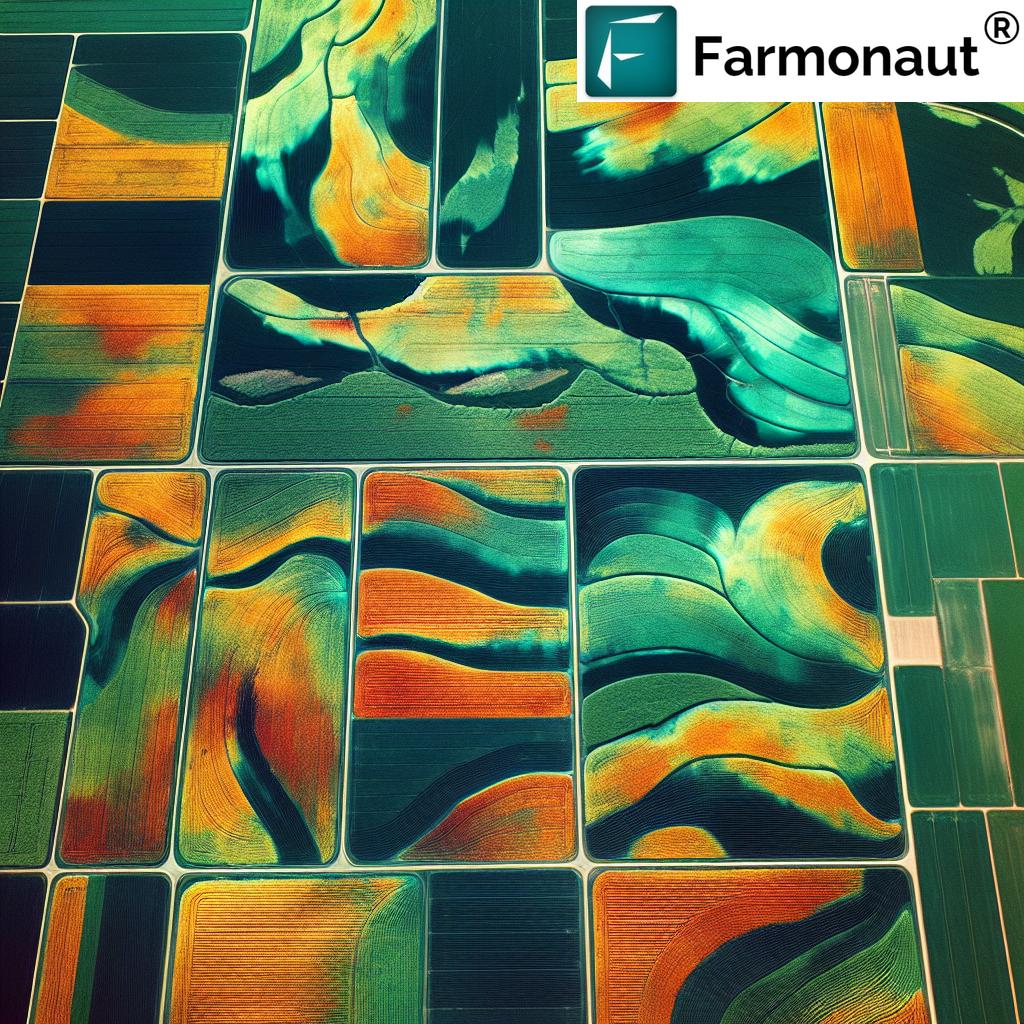
Comparison of Visual Symptoms and Satellite Imagery
To illustrate how Farmonaut’s technology can aid in herbicide injury detection, we’ve prepared a table comparing visual field symptoms with corresponding satellite imagery:
| Symptom Type | Visual Field Appearance | Satellite Image Representation |
|---|---|---|
| Leaf Chlorosis | Yellowing of leaves, often in patches or between veins | Decreased NDVI values in affected areas, appearing as lighter green or yellow patches in false-color imagery |
| Leaf Necrosis | Brown or black dead tissue on leaves | Very low NDVI values, appearing as brown or red areas in false-color imagery |
| Growth Stunting | Visibly shorter plants compared to unaffected areas | Lower overall NDVI values and reduced canopy cover in affected areas |
| Leaf Deformation | Distorted or cupped leaves | Irregular texture in high-resolution imagery, potentially detectable through advanced image analysis |
Case Studies: Herbicide Injury Detection and Management
While we can’t provide specific success stories, we can discuss hypothetical scenarios that demonstrate the potential of remote sensing in herbicide injury management:
Scenario 1: Early Detection of Drift Injury
In a large corn field, satellite imagery reveals a pattern of reduced NDVI values along one edge of the field. This pattern is consistent with herbicide drift from an adjacent field. By detecting this issue early, the farmer can:
- Document the extent of the injury for potential claims
- Adjust management practices in the affected area
- Work with neighboring farmers to prevent future occurrences
Scenario 2: Identifying Application Errors
Satellite imagery of a soybean field shows regularly spaced strips of lower NDVI values. This pattern suggests an issue with the sprayer, such as clogged nozzles or incorrect boom height. Early detection allows the farmer to:
- Correct the application issue for future treatments
- Implement targeted remediation in affected areas
- Improve overall herbicide application practices
Integrating Remote Sensing into Herbicide Management
To effectively utilize remote sensing for herbicide injury detection and management, consider the following steps:
- Regular Monitoring: Set up routine satellite monitoring of your fields through a platform like Farmonaut.
- Establish Baselines: Create baseline vegetation health maps to compare against future imagery.
- Alert Systems: Implement automated alerts for significant changes in vegetation health indices.
- Ground Truthing: Combine satellite data with field scouting to verify and characterize any detected anomalies.
- Data Integration: Incorporate remote sensing data into your overall crop management system for informed decision-making.
By leveraging these advanced technologies, farmers and agronomists can enhance their ability to detect, manage, and prevent herbicide injury across large agricultural areas.
Future Developments in Herbicide Injury Management
As technology continues to advance, we anticipate several developments that will further improve herbicide injury management:
- AI-Powered Diagnosis: Machine learning algorithms that can automatically identify and classify different types of herbicide injury based on satellite and drone imagery.
- Precision Application Systems: Integration of real-time satellite data with variable rate application technology to minimize the risk of over-application.
- Predictive Modeling: Advanced models that can predict the likelihood of herbicide injury based on weather forecasts, soil conditions, and application plans.
- Hyperspectral Imaging: Utilization of hyperspectral sensors for more detailed analysis of plant health and stress factors.
Conclusion
Herbicide injury remains a significant challenge in modern agriculture, but with proper understanding, prevention strategies, and advanced monitoring techniques, its impact can be minimized. By combining traditional field observations with cutting-edge remote sensing technologies, farmers and agronomists can more effectively manage herbicide use, protect crop health, and optimize yields.
At Farmonaut, we’re committed to providing the tools and insights needed to navigate these challenges. Our satellite-based crop monitoring system, available through our web application and mobile apps for Android and iOS, offers a powerful solution for large-scale crop health monitoring and herbicide injury detection.
For developers and businesses looking to integrate our satellite and weather data into their own systems, we offer comprehensive API access. Learn more about our API capabilities in our developer documentation.
By staying informed, utilizing the latest technologies, and implementing best practices in herbicide management, we can work together to ensure healthier crops, higher yields, and more sustainable agricultural practices.
FAQ Section
Q1: What are the most common causes of herbicide injury in crops?
A1: The most common causes include incorrect application rates, drift from nearby fields, residual herbicides in the soil, tank mix incompatibilities, and environmental stress factors that make plants more susceptible to herbicide damage.
Q2: How quickly can herbicide injury symptoms appear?
A2: Symptoms can appear within hours for contact herbicides or may take several days to weeks for systemic herbicides. The speed of symptom development often depends on the herbicide type, application rate, and environmental conditions.
Q3: Can crops recover from herbicide injury?
A3: In many cases, crops can recover from mild to moderate herbicide injury, especially if the growing conditions are favorable. However, severe injury may lead to yield loss or crop failure. The potential for recovery depends on the extent of the damage, the crop’s growth stage, and subsequent growing conditions.
Q4: How can remote sensing help in detecting herbicide injury?
A4: Remote sensing technologies, such as satellite imagery, can detect changes in crop health over large areas. By analyzing vegetation indices like NDVI, farmers can identify patterns of stress or damage that may indicate herbicide injury, often before it’s visible to the naked eye.
Q5: What steps should I take if I suspect herbicide injury in my field?
A5: If you suspect herbicide injury:
- Document the symptoms with photographs and detailed notes
- Collect plant samples and soil samples if appropriate
- Review recent herbicide applications and weather conditions
- Consult with an agronomist or extension specialist
- Consider using remote sensing tools for a broader field assessment
Q6: Are there any herbicide-resistant crops that can help prevent injury?
A6: Yes, there are genetically modified crops resistant to specific herbicides, such as glyphosate-resistant or dicamba-resistant varieties. However, it’s crucial to use these technologies responsibly to prevent the development of herbicide-resistant weeds and to follow all label instructions to avoid injury to non-target crops.
Q7: How can I prevent herbicide drift to neighboring fields?
A7: To prevent herbicide drift:
- Apply herbicides in appropriate weather conditions (low wind, no temperature inversions)
- Use drift-reducing nozzles and spray additives
- Maintain proper boom height and pressure
- Create buffer zones around sensitive areas
- Consider using precision application technologies
Q8: Can organic farming practices help reduce the risk of herbicide injury?
A8: Organic farming practices eliminate the use of synthetic herbicides, which can reduce the risk of herbicide injury. However, organic farms may still be at risk from drift from neighboring conventional farms. Organic weed management relies on cultural, mechanical, and biological control methods, which have their own set of challenges but generally don’t pose a risk of chemical injury to crops.
Q9: How often should I monitor my fields for potential herbicide injury using satellite imagery?
A9: The frequency of monitoring depends on various factors, including the crop type, growth stage, and recent herbicide applications. Generally, weekly or bi-weekly monitoring during the growing season is recommended, with more frequent checks following herbicide applications or when environmental conditions increase the risk of injury.
Q10: Are there any new technologies on the horizon that could revolutionize herbicide injury detection and prevention?
A10: Emerging technologies in this field include:
- AI-powered image analysis for automated injury detection
- Drone-based hyperspectral imaging for detailed plant health assessment
- Smart sprayers with real-time adjustments based on field conditions
- Precision herbicide application using robotics
- Advanced predictive modeling integrating multiple data sources for risk assessment
These technologies promise to enhance our ability to prevent, detect, and manage herbicide injury more effectively in the future.


